By Pete Vack
To some eyes, the Alfa Romeo Sprint Speciale (1957-1966) was a great looking piece of automotive art. Yet, so radical, so sweeping was the scope of the design, to this day there may not be a consensus. Is it a work of rolling art or is it a bloated caricature of a space age nightmare? What was the original intent? Did the SS live up to expectations?
The best laid plans…
Derived from the experimental B.A.T. prototype of 1953-55, Alfa’s Sprint Speciale was designed by Bertone as a counterpoint to Zagato’s brutally efficient and lightweight coupes. A counterweight might be closer to the truth, for what it gained in beauty over the soapbar SZ, it lost in weight. This was not the original intent; Alfa Romeo was looking toward Bertone to create a faster version of the Guilietta, favoring Bertone over Zagato as a co-producer of their cars. It is one of the more fascinating ironies that beset the Sprint Spinta.
The Spinta? Bet you thought it was Sprint Speciale. In the early months of development, Alfa was calling it the Sprint Spinta, spinta meaning “pushed” or in terms of cartalk, “supertuned”. This could have been in reference to either the design or the Veloce engine, both of which were “pushed” to the limits. By the time the car was ready for the marketplace, “Speciale”, spelled with an e, replaced Spinta.
Scaglione’s BATs certainly pushed the envelope in terms of the Cd factor—the B.A.T. 7, (the one with the wild fins), registered about .019 on the drag coefficient scale. The SS was in the .028-.029 range, excellent even for today’s attempts at drag reduction.
The engines in the prototypes and the first series of SS 1300s was the same 750 Veloce engine found in the Zagatos, and by 1959 inherited the 101 Veloce with the larger valves, better bearing supports, and wider cams, to mention a few of the changes made to the 101 series engine. The 101 1300 put out an optimistic 116 hp. The SS would go on as a 1600 cc version, also Veloce tuned, until late 1965.
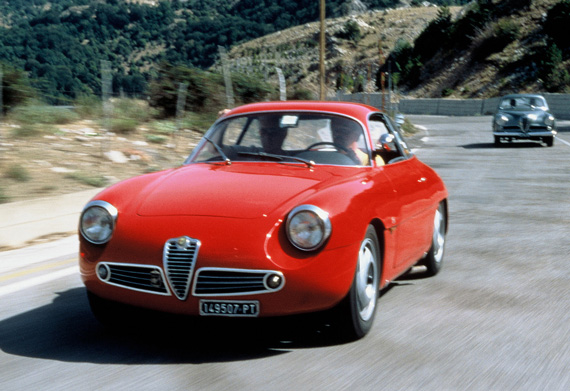
The 1300 Sprint Veloce Zagato, hands down winner on the road. But looks? Courtesy Automobilismo Storico Alfa Romeo.
So what have we got here?
Despite Alfa’s wishes, the SS became something other than what was originally intended. Exactly what was never clearly defined, and that, perhaps, is part of the problem which plagued it then and now. Streisand beautiful, that is to say that serious but charming imperfections graced an exotic face, it was a very restricted coupe, with no back seat or meaningful luggage space. The wheelbase was almost five inches shorter than the standard Sprint, though heavier due to reinforcements. When the SS finally hit the road, it outweighed the Zagato by at least 250 pounds; the SS had no chance. Reportedly, some of the first Bertone prototype bodies were all aluminum, but the standard production cars were steel bodies with aluminum hood and trunklids.
Go figure
In September of 1961, Road & Track tested the 1300 SS. In December of that same year, they tested the Sprint Zagato. So we are very fortunate to have contemporary road tests of the two cars, using the same test data and equipment. Significantly, both cars had identical engines and gear ratios. The SS test weight was 2450 lbs compared to the SZ’s 2200. Top speed for both cars was 120 mph, so the streamlining techniques didn’t seem to do the SS much good.
From 0-30, the SS registered 4 seconds, the SZ 3.6 seconds. 0 to 60 mph was a full second faster for the SZ, at 11.2 seconds, and by the time both cars reached 100 mph, the SZ was already five seconds in front of the SS. So much for Alfa’s plans to compete with the brothers Zagato
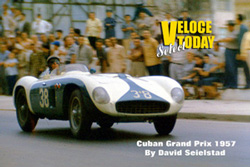 VeloceToday Select Number One:
VeloceToday Select Number One:
Cuban Grand Prix, 1957
by David Seielstad
Owning a SS
Owning an SS was a daunting experience. By the early 1970s, it was already clear that the ideal collector Alfa would be a special bodied 1300 or 1600. Cheap and accessible mechanical parts, excellent reliability and gas mileage combined with rare and unusual bodywork was a magic combination. Zagatos and Sprint Speciales were still available at affordable prices. Which is when we bought one, circa 1978, for a paltry $5000.
Upon arrival of our 1965 1600 SS, after gazing at the lines of the SS for a few days, it was necessary to rebuild the entire brake system. Not so bad, but the three leading shoe brakes were difficult to adjust in unison. The engine was strong and needed nothing.
Very few cars on the road catch as much attention as a Sprint Speciale. It looks like nothing else, then or now. It made it difficult to drive. On the road, it was obvious that the car attracted far too much attention. One shuddered at the thought of someone taking out a totally irreplaceable fender, trying to get too close.
In your heart, you knew, for you knew such things even then, that under that magnificent red lacquer repaint was a ton of bondo, and around that more rust climbing through the layers of paint and primer to get to the surface, a problem that the Zagatos did not share. The story goes that when completed, the bodies were left outside the Bertone factory, sans primer, waiting to be taken to Alfa. The rust had started before the paint was applied. This may or may not be true, but rust, for whatever reason, was terminal on most SS Alfas.
It was heavy, and it felt heavy. Gone was the heavenly touch of the Giulietta Sprint and Spiders. Still fun to drive, and with plenty of power, it had lost the essence of the standard Sprint and Spiders. It was easy to understand why more were not raced (although they were raced, on occasion, with marginal success).
Ultimately, ambivalence
The reason the SS was sold is a long lost memory. It passed on without a great deal of fanfare, perhaps we even forgot to wave as the new owners drove it away. As exciting as the car promised to be, in reality, it was an empty vow. Like the designers, engineers and salesman at Alfa Romeo in the late 1950s, we didn’t know quite what to make of this marvelous machine. It was something speciale, but a creation at odds with itself.
Chris Boles is looking for information on the SS and other Veloces. If you can help, go to www.veloceregister.net There is a submission form they can use for any Veloce. There is also a link on my blog spot at the top of the page to the registers
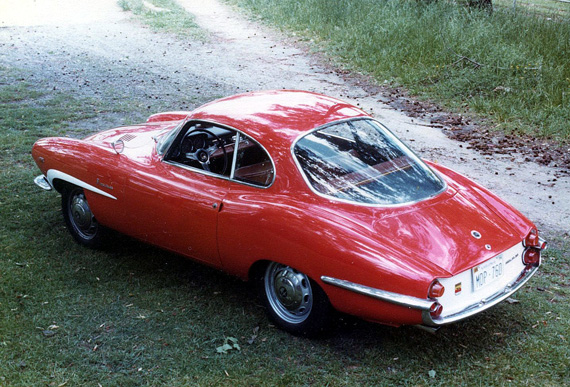
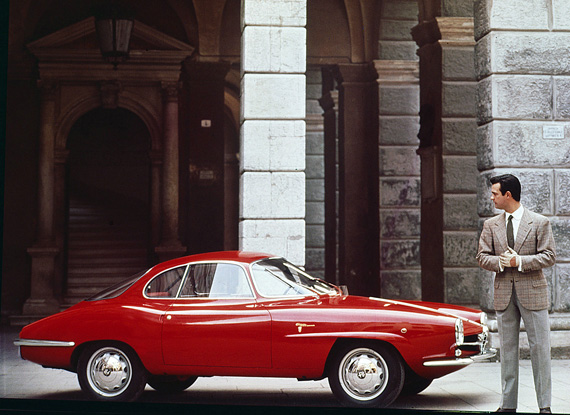
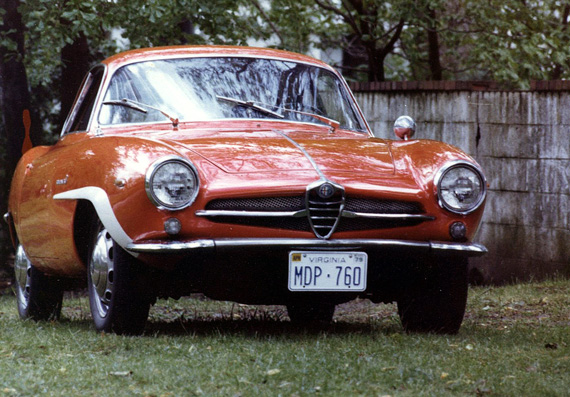
I might be confused on this…..does the SS have the same wheelbase as the Srint Veloce Zagato ? ( ref: the ecomment about the 5″ shorter wheelbase)
TIA,
Ronaldo
Bought one for $2200 or so in early ’69 just to run the Daytona 24hr. Friend put in Conrero cams; we didn’t know the SS cams were even wilder than the Veloce cams. Finished the race with the clutch not disengaging the last 12 hours. Replaced the clutch, second gear synchro, and sold the car for about$2k. Couldn’t find black contact paper for the number so used dark green fuzzy shelfliner paper. Told the tech inspector the fuzz broke up the boundary layer. He was impressed
Almost bought an SS in 1972 after I had run the wheels of my ’68 Saab 96 Deluxe. Loved the look as I had previously had a Duetto before the Saab. Opted out as I was not comfortable about how I might ever need replace the windshield. I live In Colorado and windshields are expendable. As I recall, the asking price was something south of $2000. Bought a new Austin America instead. I can’t tell you how many times I’ve regretted this decision.
ronaldo.
The sprint speciale had a wheel base at 2250, the same at Giulietta Sprint and intermediate spider. And later type 101
the SZ did have a wheel base at 2200 , the same as first 750 series Spider
ho finito di restaurarla l’anno scorso dopo 8 anni. Rotto il motore dopo 90 km. . quest’anno sistemata ….. è fantastica … soprattutto da guardare, la tenuta di strada del duetto è altra cosa!!
I owned an SS from 1963 until 2010. A most pleasureable car to own and drive. One of few cars to win a trophy at Elkhart Lake for performance and also an award at Meadowbrook for appearance 30 years later. It did everything a sports cars could do, and did it gracefully.